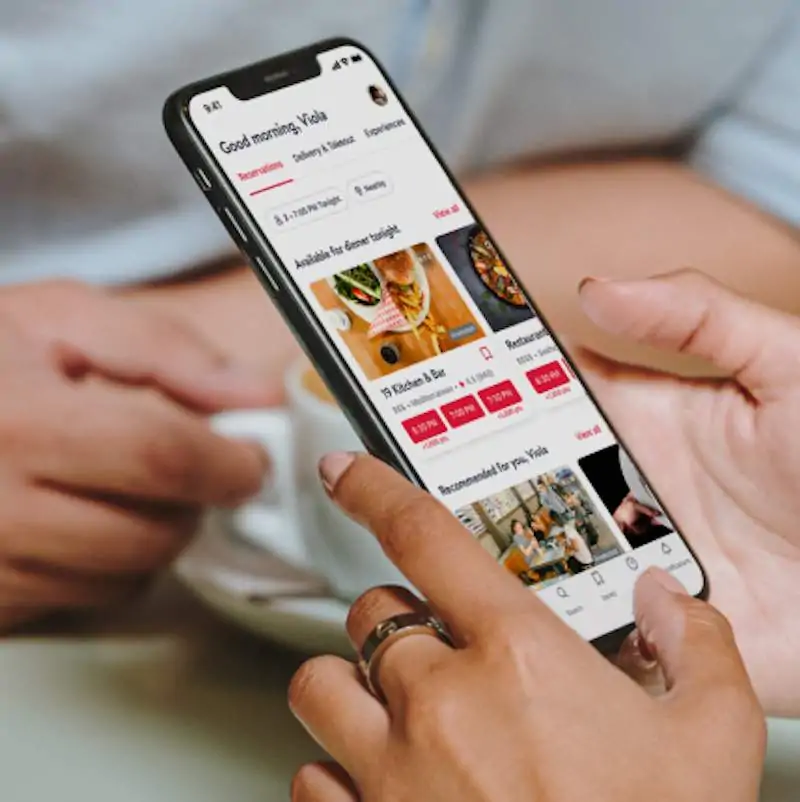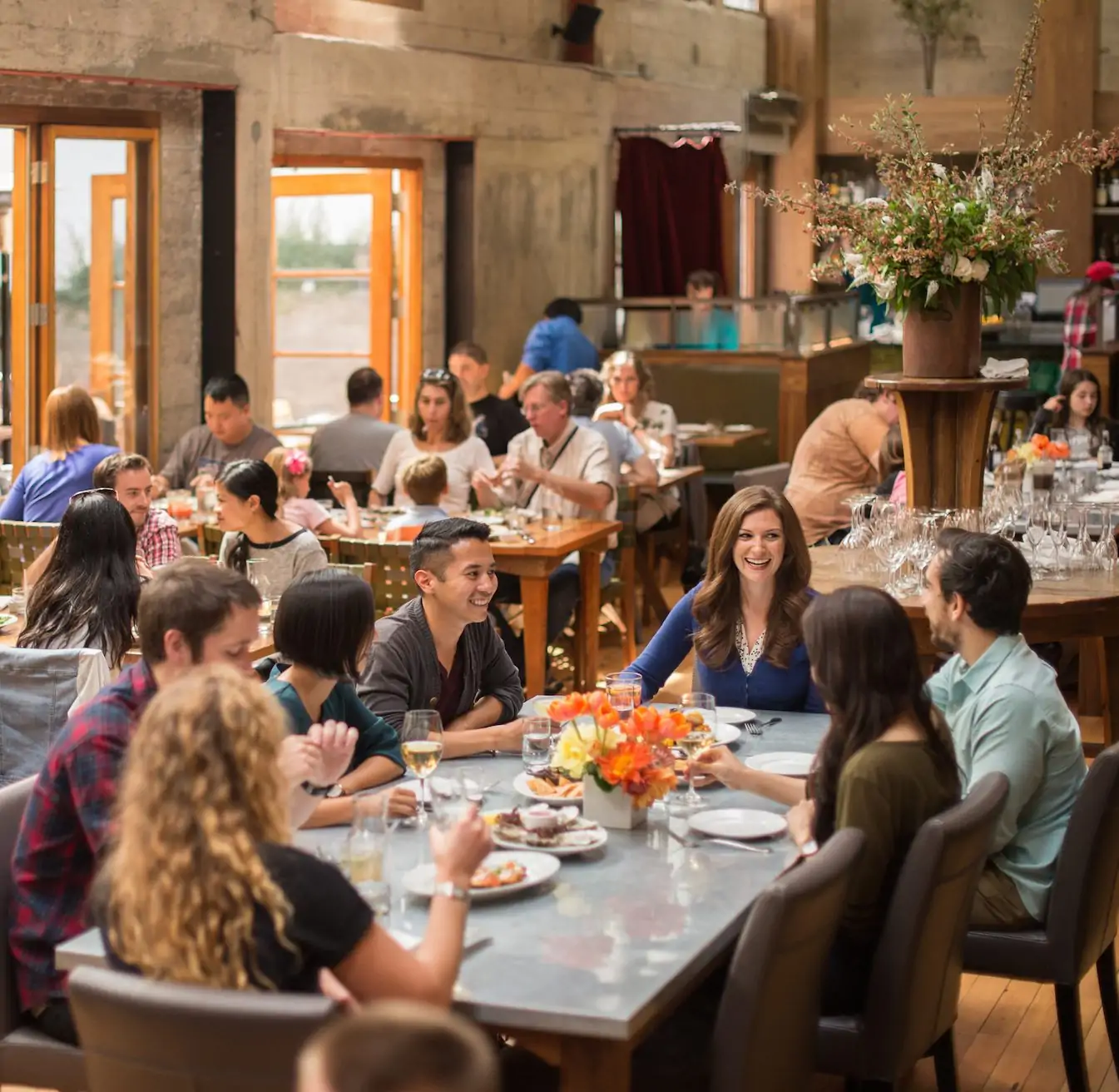Online ordering is changing the restaurant industry around the world. Thanks to the rise of delivery apps and mobile apps that help hungry people place their food orders online, diners now expect online ordering from burger joints and bistros alike.
Back in October 2019, 60% of restaurant sales were either takeout, drive-through, or delivery according to a survey conducted by the National Restaurant Association. Many experts think growth will average more than 20% a year, reaching $365 billion in sales worldwide by 2030.
Increasingly, digital touchpoints function as the new front door for many guests who experience restaurants mainly through online ordering. Savvy restaurant owners will bring the same level of customer service to the online ordering process as they do to the hospitality offered in the dining room.
Though there’s a lot to understand about online ordering for restaurants, keep in mind that this technology can benefit both the restaurant and customer. It all starts with setting up an online ordering system that works for you.
How to set up an online ordering website or system
One of the first decisions you need to make is whether to build your own custom online ordering solution from scratch, use available online ordering software, or partner with a third-party company to handle restaurant delivery orders.
Building something from scratch gives you the most control. Ultimately, most restaurants decide against it because it’s expensive to build and maintain. It requires working with a web developer to add online ordering to your current website. In addition to the time and expense, it will be a challenge for some restaurant owners to learn how to update and troubleshoot the system.
Choosing a point of sale (POS) system that has the capability to take online orders is a more popular solution. Some big names in this arena include Upserve, Toast, and Square for Restaurants. These systems are user-friendly for both the customer and the restaurant, though they come with processing fees and other costs.
Another option is partnering with a third-party delivery service. The biggest names here are Uber Eats and DoorDash. The advantage here is convenience. You can be up and running quickly.
The partner company handles the driving, and they have support teams that can offer assistance with customer service. These online platforms are so large and widely used that you gain visibility by being on them. People open these apps looking for “Italian” or “noodles” and they find new restaurants this way.
The major disadvantage with third-party apps is the cost. These companies’ commission fees can be punishing in a business with notoriously slim profit margins. Expect them to charge between 10% and 30% of every customer order placed on the ordering platform. For some restaurants, but definitely not all, the cost is worth it.
On-premise, off-premise or both?
Another big decision restaurateurs need to make for online ordering is whether people will be able to place orders online in the dining room, offsite, or both. For now, it’s much more common for online ordering to be available to those getting takeout or delivery only. But using digital ordering in the restaurant is worth considering as well.
Amid the current labor crisis, digital ordering through a QR code or ordering app can take the heat off busy servers. An online menu can show much more information than a paper menu. It reduces the number of questions from guests about specific food items. There’s no risk of transcription errors that result in wrong orders because guests are doing the ordering themselves.
With digital ordering, guests can order when they’re ready without the help of a server and get another round of drinks without needing to flag someone down. Guests can also pay whenever they’re done, eliminating the back-and-forth of settling up with a server at the end of a meal. All of this means team members can spend more time delighting guests and guests spend less time waiting.
The benefits on online ordering for restaurants
One big plus for restaurants is that an online food ordering system is more efficient than taking incoming orders over the phone. Not only do guests prefer to use an online ordering system, it frees up staff who had been fielding these calls. It also takes care of most aspects of order management, streamlining operations.
Unlike paper menus, it’s easy to make instant changes to an online menu. As soon as the fish and chips or tomato soup runs out, it can be removed. This eliminates disappointment for guests who choose something only to learn it’s no longer available when they try to order it.
Online ordering can offer a restaurant important information, depending on how it’s set up. Some systems can give you real time stats on cash flow. Online ordering can help collect customers data, including frequently ordered items. This empowers a restaurant to offer more personalized hospitality.
The most important benefit to restaurants is a healthier bottom line. Online order totals are 20% higher one average than on-premise orders, according to a recent survey. It’s possible this is because online ordering makes it easy to place large orders or that people order additional items when they have more time to review the menu at their own pace.
Advantages of online food ordering for customers
For guests, whether they’re enjoying their meal at home or in a restaurant, the major advantage of online ordering is convenience. It allows them to take their time poring over the menu. They never just pick something because a server is hovering.
Unlike most restaurants, online ordering doesn’t need to close at a certain time. It doesn’t close because it’s short staffed. Online ordering can operate 24 hours a day, and accept orders in advance. This too provides convenience for people planning ahead.
When well designed and implemented, online ordering removes a lot of the waiting periods and delays that can distract someone from their restaurant experience. People love the option of adding one more small plate when they see they didn’t get quite enough when they are eating in a restaurant and the luxury of having their favorite dishes delivered to their door, too.
Market your online ordering
Setting up a mobile ordering system will only take you so far if people don’t know about it. The online food delivery market is crowded, so it might take some effort to get noticed. Even if you are partnered with a third-party delivery service, you still need to spread the word that online ordering is available, especially if you haven’t done it before.
The availability of online ordering can also burnish your online presence, so don’t be shy about promoting it. When you have a user-friendly online ordering setup, it’s a great thing to share and link to on social media. Feature it prominently on your Google Business Profile, OpenTable, and other business profile pages.
If people aren’t using it as much as you hoped, it just means you should be marketing more. Start with checking the placement of online ordering tools and make sure they are front and center on your webpage and listed at the top of your business profiles.
After that, consider creating special deals and promoting them on social media. Give people an incentive to order. Offer a free soft drink or cookie if you can. Experiment with paid ads on social media to get the message out there.
Over time, it’s become obvious that offering online ordering is important for keeping your business growing. Guests demand it, so if customer retention is important, online ordering must be as well. And remember that online ordering can increase sales. Thankfully, once up and running, online ordering isn’t as difficult to offer as you might think.




